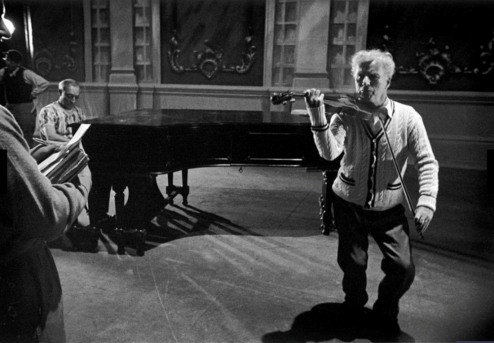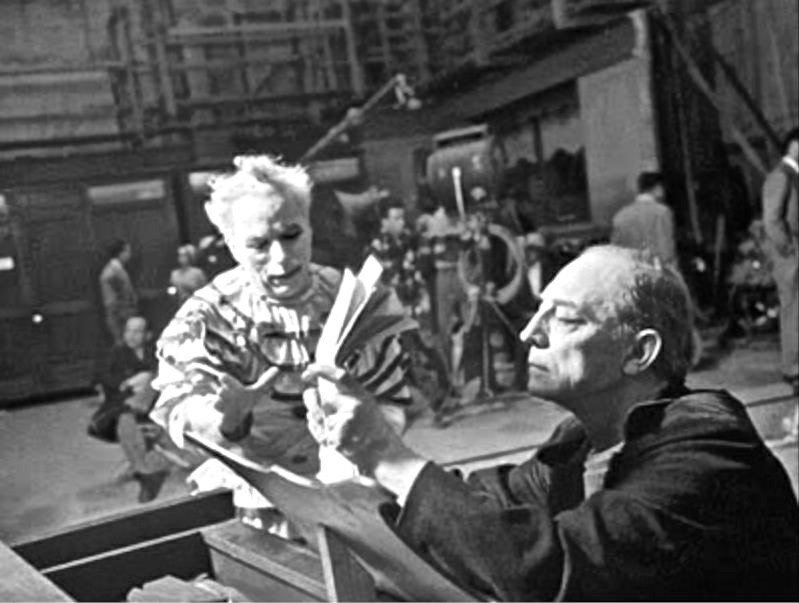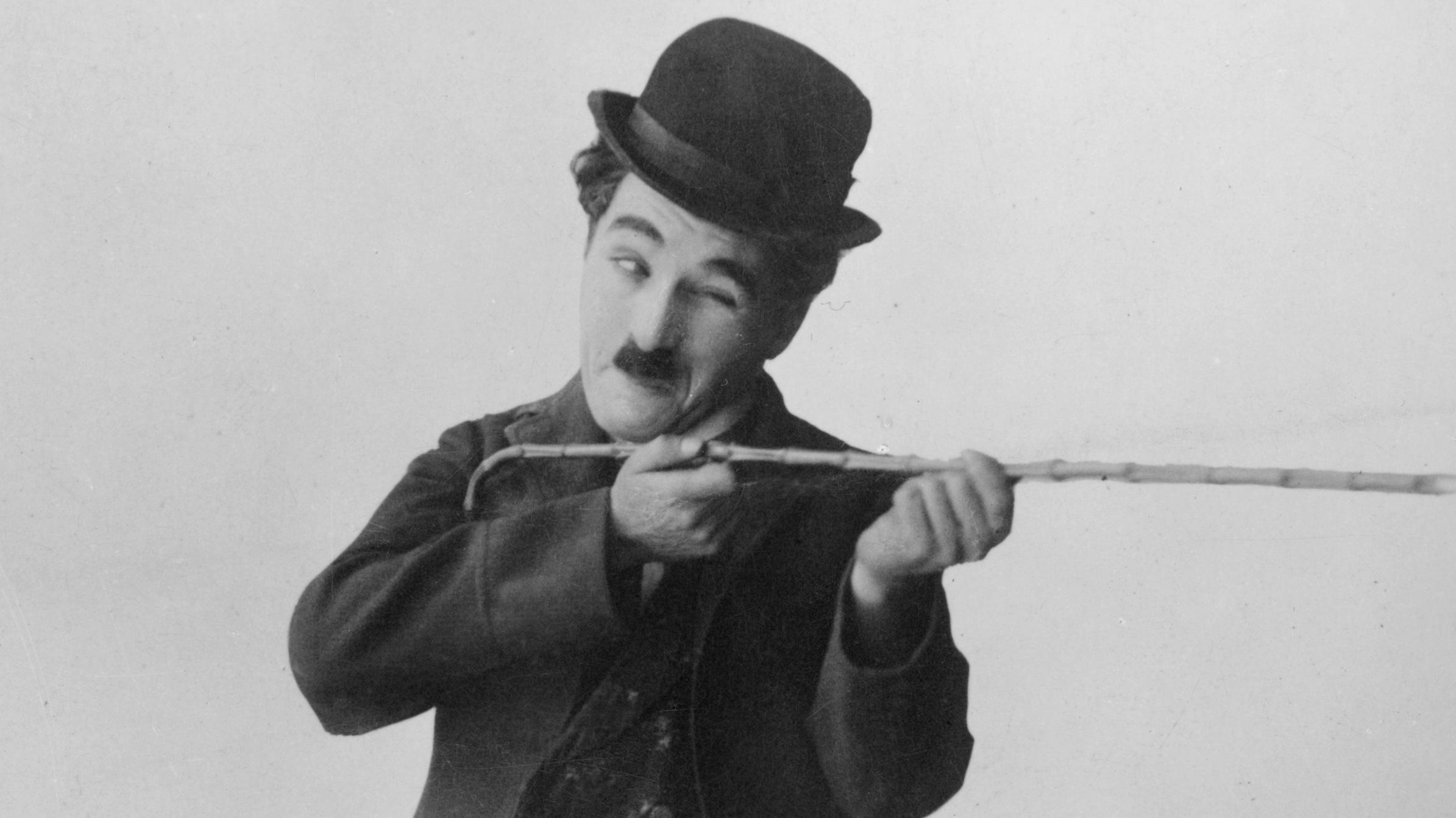Here’s an interesting piece I’ve been wanting to share! It’s from a book called The Legend of Charlie Chaplin, compiled by Peter Haines. This is a collection of essays and interviews by Chaplin’s friends, fellow actors, and other contemporaries, recalling their experiences with him. They’re essentially reprints from hard-to-find publications, the dates ranging from the 1910s-1970s. And we’re talking pieces by greats like Mary Pickford, Mack Sennett, Stan Laurel, etc. I can’t recall hearing anyone discuss this book–although I suppose it was printed back in the early ’80s–and I got it off Amazon a few years ago on a whim (where it’s still available at surprisingly reasonable prices, by the way).

Keep an eye out for it!
One of the pieces is an interview given by our Buster Keaton to the French magazine Arts in October 1952, during the time when Limelight (1952) was being publicized. It’s, err, clearly translated from French, which was already translated from English, resulting in an oddly formal tone for the salt-of-the-earth Buster. But here and there you can decipher a very Buster-ish phrase or two.
Important context: this interview was taken not long after Chaplin and his family left the U.S. for the premiere of Limelight in London. Chaplin had long been suspected of communist sympathies, this being the McCarthy era, and as a result he was forbidden to re-enter the U.S. As you can imagine, this was a widespread scandal. Buster does comment on the situation a bit below. Take a look!
MY FRIEND CHARLIE
“I have known Charlie since 1912 and our friendship today is as close as ever. This constancy of affection is, perhaps, one of the truest characters of the man who is, to everyone, just Charlie.
“However, so much has been said about his impulsive, unstable character; about his pessimism, his sadness and his unkindness. The simple explanation for these quite wrong ideas is that people do not easily forgive a genius for being only a man. Perhaps, too, we want to make him pay the penalty for being so dazzlingly superior.

Behind the scenes of Limelight.
“Legend requires that clowns–once they have left the arena where they have just given enormous amusement–should return to their sorrow and bitterness in their dressing rooms. It is a great pity for such a touching and romantic image that I have to say that Charlie, in private, is the gayest of companions and the most delightful, kind and brilliant conversationalist I know.
“In truth, it is at work that he is least funny, if I may say so! Then, calm, cold, lucid and watchful, he pursues his love of perfection with the same attention to detail as a collector handling the wings of a butterfly.
“There are no minor sequences in a film for Charlie. Each image is prepared with meticulous care. And the so called ‘classicism’ of Chaplin is nothing but his love of work well done.

“Moreover, we can never admire enough his grasp of detail, the clockwork precision which each of his films represents, and which is perhaps the essence of his genius–an element even more important than his art of the gag. For by this perfect precision his comic sense is molded into an eternal kind of material; into almost human flesh itself. Chaplin was able to put more substance into his walking-stick than there were electrons in the Hiroshima Bomb.
“Charlie knows what he wants, and like all great enthusiasts he creates his own time. That is why his films now take five years to make. He commits himself utterly to each one, and risks his reputation, his talent, his health and his fortune all at once. No price is too high to pay. He is a great artist, always ready to cast aside everything for the sake of his work.
“However, let there be no misunderstanding about Chaplin’s passionate attitude. I remember twenty years ago he was asked if he was a Bolshevik. Today he is questioned about communism. To tell the truth, I believe that Charlie does not know what a political party is–only that he has voted to serve Art.
![Limelight | film by Chaplin [1952] | Britannica](https://cdn.britannica.com/91/175591-050-F303973A/Charlie-Chaplin-Claire-Bloom-Limelight.jpg)
“But he has always been on the side of those who suffer against those who have everything. He is for those who think that everyone should have enough to eat, and can sympathize with anyone who has been hungry and can remember.
“Still, I digress too far from the point. Making Limelight with Charlie was a great pleasure for me. Not only because it meant working for an old friend, but because doing anything with him is marvelous.
“He had prepared and written everything in advance. But once in the studio he improvised within the framework he had drawn.
“To my mind he is the greatest director of comic actors there is. Roscoe Arbuckle, who worked with Charlie, was perhaps the only other great director of comedians.
“I recall that on many occasions I was summoned to the studio by Charlie, only to be told when I got there to come back the next day as he had changed his plan of work and was engrossed in something else. His is the only studio in Hollywood where work is done like that. The rest are just factories!

“Finally, I must just mention the ‘Chaplin Affair.’ Why shouldn’t he be allowed to return to the United States? He has done nothing illegal. There is nothing he can be blamed for. He pays his taxes and keeps the peace.
“Surely he has the right to a make a six-month visit to Europe? Isn’t he an English subject, after all?
“No, the arguments against him do not hold good! Let him return, I say, no one has the right to do what these people are doing to Charlie Chaplin!”
Genius talking about genius–fascinating. Note his fond memories of working on Limelight, the name-dropping of Roscoe Arbuckle (awesome) and this heck of a quote: “Chaplin was able to put more substance into his walking-stick than there were electrons in the Hiroshima Bomb.”

In regards to Chaplin’s political kerfuffles, it looks like Buster’s opinion was pretty consistent through the years–he thought that deep down, Chaplin didn’t know much more about politics than he did (Buster was contentedly apolitical). To illustrate this point, here’s a useful excerpt from Buster’s 1960 autobiography.
So one night back in 1920, Charlie Chaplin and Buster Keaton were hanging out in Buster’s kitchen drinking beer and discussing communism (I can never pass up the opportunity to say that):
He was going on at a great rate about something called communism which he had just heard about. He said that communism was going to change everything, abolish poverty. The well would help the sick, the rich would help the poor.
“What I want,” he said, banging the table, “is that every child should have enough to eat, shoes on his feet, and a roof over his head!”
Naturally, this amazed me, and I asked, after thinking about it a minute or two, “But, Charlie, do you know anyone who doesn’t want that?”
Charlie looked startled. Then his face broke into that wonderful smile of his, and he began to laugh at himself. I myself have gone through life almost unaware of politics, and I only wish my old friend had done the same. He must know by now that communism, wherever it has been practiced, bears not the slightest resemblance to the benign system he described to me forty years ago.
I do not really think Charlie knows much more about politics, history, or economics than I do. Like myself he was hit by a make-up towel almost before he was out of diapers. Neither of us had time while growing up to study anything but show business. But Charlie is a stubborn man, and when his right to talk favorably about communism was challenged he simply got bullheaded about it.
As this was written there were rumors that Charlie would like to get back to America. I hope he makes it. Even more I hope he keeps his promise to start making pictures again.

Buster and Charlie in the olden days.
In both of these excerpts, but especially the one from The Legend of Charlie Chaplin, I found Buster’s warm descriptions of Charlie to be both fascinating and a good counter to the persistent rumors that the two were somehow bitter rivals. Perhaps the truth is less dramatic…and even rather heartwarming.
—
Sources:
The Legend of Charlie Chaplin, ed. Peter Haining. Secaucus, New Jersey: Castle, 1982.
Keaton, Buster, with Samuels, Charles. My Wonderful World of Slapstick. New York: Doubleday & Co., 1960.

What a beautiful post! I love how elequent Buster was and how highly he viewed Chaplin! His quote about a genius being human summarizes Charlie in my eyes! May I share your post on my blog! It’s not often you find such a sweet piece! Thank you for sharing it!
Absolutely you may, I’m really glad you enjoyed it! 🙂
Wonderful post Lea – I wasn’t aware of this interview – fascinating
It’s such a nice, insightful one too. Definitely deserves to be more widely shared!
Thank you! 😊
Superb, one legend’s thoughts on another legend, so interesting. Thanks!
You’re so welcome!
Thanks, Lea! Always a pleasure1
Nice to see you, Bruce! 🙂
I’ve heard a couple of different interviews with Buster from the late 50s and he’s wonderfully articulate in them. He repeats much info but says the same thing, which suggests to me that he’s consistent in his recollections.
Agreed, he also had an incredible memory for small details.
I do know from the writing about Stan Laurel that Charlie and Stan came to America on the same ship in the Karno company. Stan was Charlie’s understudy. They shared rooms together and were hungry together. Then Charlie went to Hollywood Stan stayed on the road at least and 10 years making some movies and returning to vaudeville till he was in his mid 30’s before being teamed with Oliver Hardy. But when Stan read Charlie’s autobiography he couldn’t believe that Charlie didn’t even mention him.
This is true, there are other people Chaplin worked with that he didn’t include, either, much to their confusion. Not sure if he thought people wanted the focus to be on him, or if he let a bit of arrogance mess with his judgment (I love you, Charlie, but you did get arrogant at times in later years).
Pingback: Just Another Reason…To Love Buster Keaton – The Thoughts of One Truly Loved
I’m not (yet) a Keaton aficionado, having seen only 2 of his features, ‘Sherlock Jr’ and ‘Spite Marriage’, his last silent film in 1929., both of which I liked. Keaton’s comments about Chaplin show that he is articulate as well as discerning and generous in his assessment of Chaplin, both the artist and the man.
I wondered, what did Chaplin think of Keaton? I have Chaplin’s 1965 autobiography and the index lists several pages about ‘Limelight,” but there is no mention of Keaton here or elsewhere in his book. Chaplin says that the only friend he made in Hollywood was Douglas Fairbanks. Fairbanks was his ‘best’ friend, but surely there were others. Chaplin writes about the titled and other celebrities he met (boring reminiscences) and ignores his fellow film compatriots, such as Keaton and Arbuckle, which is a major disappointment as Chaplin’s comments about his contemporaries would have been an important contribution to film history.
What Keaton says about Chaplin makes me like Keaton and want to see more of his films as well as read his autobiography. Thanks, Lea.
Yes, it’s unfortunate that Chaplin focused on all the fancy celebrities he got to hobnob with, instead of discussing his contemporaries. Doug may have been his closest friend, but he was certainly friendly with other folks in Hollywood.
Oh, you’ll enjoy Buster’s autobiography! It’s a great read, and really captures the flavor of life in the vaudeville era and early Hollywood.
nice
Indeed! 😉
Thanks for this interesting excerpt!
You’re very welcome!
Just a simple “Thank You” from an avid reader in Austria.
Your articles are always a delight.
Why you’re welcome, wonderful to hear from you! Stop by anytime. 🙂
Nice piece Lea. I’m happy to see your inclusion in the new book on the Kops. I’ve had that book since its original printing. Lots of great rare articles. Another good one is Haining’s 1989 CC A Centenary Celebration.
Phil
Hopefully more folks will add it to their collections, it was very well put together!
I like how Buster had respect for the other comedians of the day and often helped them out such as Lucille Ball and Dick van Dyke. He supposedly did not think too highly of Bob Hope, though.
They did have very different styles, I think I recall Buster talking about Bob not being good at slapstick, but great at verbal comedy, something like that…!
A beautiful glimpse of Chaplin from outside his autobiography, which I just finished reading. Keaton seems to substantiate Chaplin’s view of himself but from a third person perspective. Long live Chaplin, Keaton and those who moved us without words. May the beauty and innocence of silent film never be forgotten as it was and is an art form unto itself.
*Applause* for this great comment, Dave. 🙂
Dave’s comment is spot on. The 3 icons of silent comedy plus Arbuckle and Laurel & Hardy – each very different from the other and all admiring and learning from one another – gave audiences their World View cloaked in laughter. We, today, are not the audience of 100 years ago, and yet the comedians of the silent era – more so than those of the sound era – retain the power to let us see ourselves as we are. How fortunate it is that so many of their films were preserved.
Perhaps the key is that they were such remarkable observers of human nature, to the point where their work appeals to generation after generation…
Pingback: It’s Silent-ology’s Seventh Anniversary! | Silent-ology
Pingback: “My Eccentric Roommate”–Stan Laurel’s Early Memories Of Charlie Chaplin | Silent-ology
Hello Lea!
I am a Charlie Chaplin and Buster Keaton encyclopedia haha, so I have read this already, but thank you so much for sharing it for all those who haven’t. One of Buster’s wonderful qualities is he never forgot who his friends are… Charlie didn’t either :). The world was a much better and kinder place with people like them in it, but stars will never stop shining bright.
-Melody
Hello fellow encyclopedia! 🙂 Yes, those of us “in the know” about this awesome interview gotta share it, it’s a great piece. Drop by anytime, by the way!